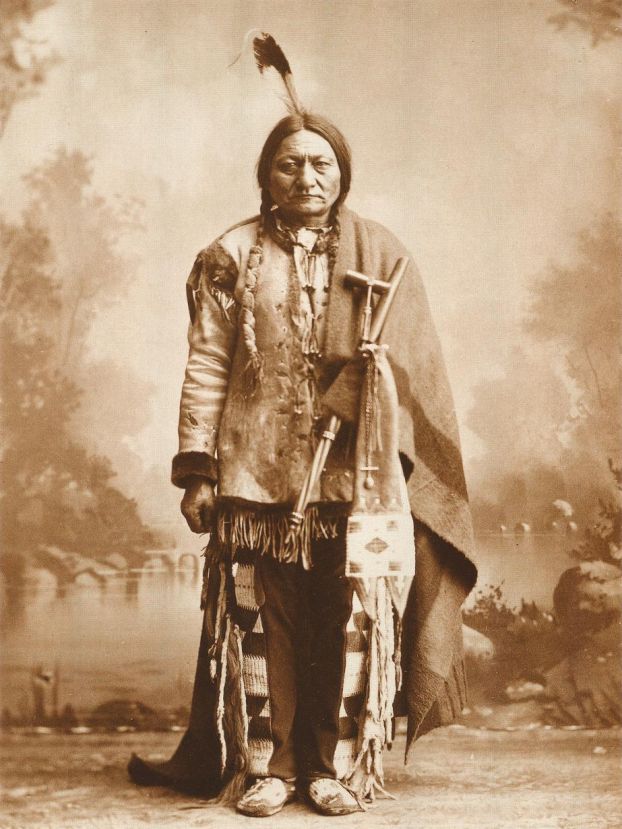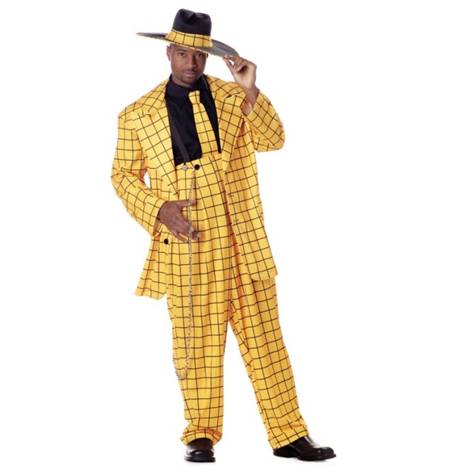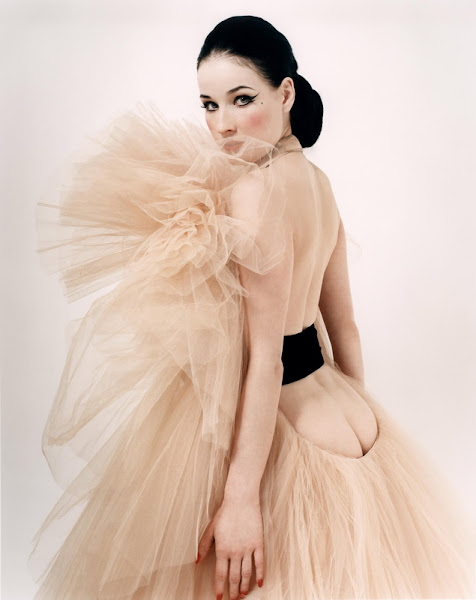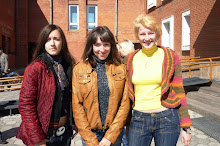понедельник, 5 апреля 2010 г.
Подписаться на:
Комментарии (Atom)
Fashion plays a very important role in the history and customs of all nationalities, and America isn’t an exception. Fashion has always been intrinsically connected to deeper elements of the American experience, from the economy and labor system to culture, religion, and class.
Whether Americans have dressed to make a political statement, to assert their class status, or simply to be irreverent, every style has carried a certain social meaning. This is in part because their culture has long ascribed great significance to individuals' public image, and because image has long been intertwined with the American capitalist economy. As Mark Twain once wrote, "Clothes make the man. Naked people have little or no influence on society." Clothes—or the lack thereof—remain central to contemporary American culture and integral to their national history.
We have chosen this topic because it seems rather interesting and full of creativity to us. Today fashion is located in New York, so America has become the trendsetter of the whole world, so we can witness the history of all fashion - step be step - looking at the history of American fashion. Moreover, fashion is closely connected with culture, government and so it was interesting to such different parts of human life! Besides, American Fashion has become the wonderful example of the fact that fashion today repeats.
So, let’s see the history of the American fashion.




As early as the 1820s, the suit—a dark and simple coat, waistcoat, and trousers (the latter said to derive from English sportsmen and French Revolutionary workmen's costumes)—had become the standard garb of urban upper‐class and middle‐class men as well as some skilled craftsmen:



Though Quakers, Shakers, and other religious sectarians abandoned corsets and layers of petticoats in favor of plain dress or a form of trousers, urban women did not customarily wear pants until the 1930s and 1940s.
Young ladies of the early 1800s wore straw hats or bonnets, often decorated with flowers and tied with a ribbon under the chin. Larger round bonnets, trimmed with lace and ribbons, were worn in mid-century. By the 1870s, hats were replacing bonnets for the most fashionable ladies—perhaps a pillbox tipped forward at a jaunty angle and topped with feathers or artificial cherries.

By midcentury, a more voluptuous figure came into fashion, perhaps owing to the influence of immigrant women, for whom weight offered a cultural gauge of wealth. Both men and woman nipped their waists with corsets and enhanced their rears with padding and bustles to create a nature‐defying shape called the “Grecian Bend.” This fashion was satirized on stage by the “British Blondes,” a touring company that entertained burlesque and vaudeville houses with their comically overadorned, buxom, and bustle‐enhanced characters.

Changing roles for women and the craze for outdoor activities led to new fashion trends captured by Charles Dana Gibson (1867–1944) in his 1890s magazine illustrations of the statuesque “Gibson Girl,” an emancipated figure costumed for golf course, riding course or office. Her shirtwaist and flowing skirt, easy to manufacture and appropriate to different classes, resembled a man's suit. Women's hemlines rose steadily.


During the Revolutionary War Era, colonists boycotted British goods and produced their own cloth and clothing—called homespun—demonstrating republican self‐sufficiency, frugality, and industry. The patriotic rejection of British imports, coupled with the invention of the cotton gin and the rise of the textile industry in the Northeast, stimulated cloth manufacture in the new nation and hastened the shift from home production to commercially produced goods. By the mid–nineteenth century, mail‐order catalogs and the establishment of dry‐goods and department stores helped nationalize the distribution of cloth, trim, and ready‐made clothing. The rise of standardized sizing, stimulated by the Civil War demand for uniforms, allowed manufacturers to employ women, immigrants, and children to assemble garments by the piece in their homes. Sweatshop labor accounted for nearly half of all clothing manufactured in the United States from 1870 to 1900.

Magazines featuring colored lithographic fashion plates, notably Godey's Lady's Book (1830–1898), along with sewing machines and paper clothing patterns (devised by Ebenezer Butterick in 1863) communicated women's fashion trends widely. One pale and sylphlike ideal of female beauty was dubbed the “steel‐engraving lady” after the print technology that popularized it. Her bell-shaped skirt, sloped shoulders, crimped waist, and muted colors obscured the genteel lady's sexuality and stressed her delicacy and virtuous morality.



The dawn of the twentieth century was a time of excitement and optimism.

The period from 1910 to 1919 was dominated by World War I, known at the time as the Great War (1914–1918). And it brought the new fashion styles. For women, a new, straighter silhouette became fashionable, with less emphasis on the breasts and hips. Corsets were no longer so tight and waist-pinching and were worn with long drawers.Women also wore a bust bodice to support the bosom.
The brassière was patented in 1914 by the American Mary Phelps Jacobs. She is said to have constructed her first bra from two handkerchiefs and a length of ribbon. In the early 1910s, many women began to wear empire-line dresses, which had a low-cut neckline and exaggeratedly high waist.



During the twenties it was fashionable to spend the weeks up in town, and the weekends in the country. Here, people pursued outdoor sports, including golf and cricket. Tweed plus-fours or knickerbockers were popular with male golfers. Plus-fours were so called because they ended four inches below the knee. Women sometimes wore knickerbockers, too, but tweed skirts were less controversial. These were worn with woolen sweaters. Britain’s Duke of Windsor popularized the cozy Fair Isle sweater. Originating from one of the Shetland Islands in Scotland, Fair Isle knits feature a geometric pattern in soft colors.

After the high-living twenties, the thirties were a sober time. Fashion reflected the difficult times. Clothes were in subdued colors, such as black, gray, navy, and brown. Many families could not afford new clothes and managed with hand-me-downs. Designers responded to the depression by creating more ready to- wear outfits in less costly fabrics, such as cotton and rayon.
Twenties’ styles has emphasized women’s legs. During the thirties, hemlines swept the floor again and attention turned to the back. Backless evening gowns were the height of fashion. The boyish figure was no longer fashionable.



The silver screen came to dominate fashion. Moviegoers copied the

During the years of Prohibition(1920–1933), when alcohol was banned in the United States, the black market flourished. Wealthy gangsters dressed in exaggerated versions of respectable business suits. The wide shoulders and narrow waists emphasized the torso, giving an impression of size, strength, and masculinity.








During the fifities, post-war rivalry between the United States and the Soviet Union developed into deep mistrust, marking the start of a long period known as the Cold War.
Having emerged as a major superpower, the United States also took over in the world of fashion. Most everyday clothes were inspired by the “American look,” massproduced separates that could be mixed and matched.Twinsets—a sweater and matching cardigan—were very popular, usually in fresh pastel shades of pink, blue, and yellow. Sweaters were tight-fitting, as worn by the Hollywood “sweater girls,” Marilyn Monroe, Lana Turner, and Jayne Mansfield. Some were made of wool, but others were in a new “wash-andwear” blend of acrylic and cotton.
Skirts came to mid-calf, and could be straight or full. Pencil skirts were long Compared to the previous two decades, however, the fifties was a time of optimism and prosperity. Baby boomers born just after the war grew up to become the first “teenagers.” Young people had their own fashions and culture, especially in the United States, which was the birthplace of rock and roll music. There was an explosion of new technologies. Labor-saving appliances gave housewives more spare time.
Invented in the twenties, television took off as sets became more and straight and looked extremely elegant with a matching suit jacket and high-heeled shoes. Full skirts, continuation of Dior’s New Look, became exaggerated for the youth market. Worn over taffeta petticoats and sometimes featuring lots of accordion pleats, they permitted plenty of freedom for dancing.


Another group of young rebels who emerged in the fifties were the Beat generation—poets and writers who hung out in the cafés of Paris, France, and Greenwich Village, New York. Although the beatniks, as they were known, did not want to conform in any way, their individual clothes style soon became a sort of uniform in itself. Many of the men grew goatie beards. Some wore plaid work shirts and jeans, while others slouched in shabby suits. Beatnik women dressed in pedalpushers and men’s shirts, and sometimes cut their hair extremely short.
Dance crazes of the fifties had an enormous influence on youth styles.
Rockabilly girls wore full, swirling skirts. Even their ponytails emphasized the twisting and twirling moves they made to the new rock and roll music. Boys wore snug-fitting jeans and twotone shoes, just like their rock hero, Elvis Presley.
In Britain there were two main youth styles at the end of the fifties, which were as much defined by their musical tastes as by their clothes.The jazzlovingmods wore smart suits with tight,“drainpipe” trousers and short jackets. Those who could afford them rode Italian scooters, such as Lambrettas or Vespas. Rockers listened to rock and roll and dressed in scruffy jeans, T-shirts, and long, pointed shoes.



Another inspiration was the space race, with designers using synthetic modern materials in space-age silvers and whites. André Courrèges, Pierre Cardin, and Paco Rabanne were all known for their outrageous space-age styles.These designers worked in vinyl, synthetic rubber, and even metal, with Rabanne famously creating chainmail minidresses.








Spandex was invented as early as 1959. During the seventies, under the trademark Lycra, it started to appear in sports and disco outfits, as well as underwear. Adding Lycra toa material such as cotton gave stretch and helped the fabric keep
its shape. Lycra was also quick drying, which was an advantage for sports or dancing. Lycra breathed new life into other synthetics such as rayon, nylon, and polyester, which were being used for the nostalgic fashions. Lamé, a twenties’ brocaded cloth with tinselly metallic threads, also reappeared with stretchy Lycra added.
Originally known as “sidewalk surfing,” skateboarding began with
people riding surfboard-shaped boards set on wheels. The first
manufactured skateboards appeared in 1965, and by the seventies
skateboarding was a craze. The first skate parks opened in the United
States. Skateboard riders developed their own fashion style, wearing
baseball caps, T-shirts, and baggy jeans. The sport started to decline
in the early eighties, with the arrival of BMX bikes and rollerskates,
but saw a revival in the nineties.

Like the sixties, the seventies was a time of social protest. Groups that had traditionally been marginalized by society—including women, blacks, and gays—continued to fight for their rights. The peace movement grew stronger campaigns against the Vietnam War and the growing nuclear threat. There was also an increasing awareness of environmental concerns. Unlike sixties’ protestors, those of the seventies sometimes resorted to violence, such as sieges or letter bombs.
Strangely, anti-war protestors often adopted military clothes. They bought army surplus because it was cheap and practical. The clothes, in khaki or camouflage prints, did not show the dirt, and were hard wearing. Combat trousers and jackets also had plenty of useful pockets. More importantly, protestors wore uniforms to show that they were at war—with the Establishment. They also wore it to undermine the real soldiers.

Hairstyles also became a badge of identity for other groups. Black menand women continued to adopt the Afro as a symbol of black pride. Anti-war protestors generally wore their hair long, not just because they were hippies, but also to contrast with the cropped hair of the soldiers they opposed. Toward the end of the decade, new styles appeared. Glam rockers teased their hair into larger-than-life styles. Spiky punk haircuts, often dyed in primary colors, were even more shocking.










The nineties saw a high-tech revival of the sixties’ fashion for clothes in unusual materials, such as metals, paper, and plastics. Some designers created evening gowns and wedding dresses in fine-spun metal fabrics, such a aluminium. British designer Hussein Chalayan’s “cast dresses” were made from hinged panels of rigid, molded polyester resin. Chalayan also used Tyvek, a papery material commonly used for envelopes. Developed as early as 1955, Tyvek is also used for the protective clothing worn in hospitals. It is strong, lightweight, and water-resistant.




Fashion has evolved into something that is no longer dictated by society. In the XXI century it is accessible to all people.

